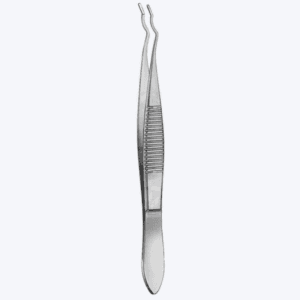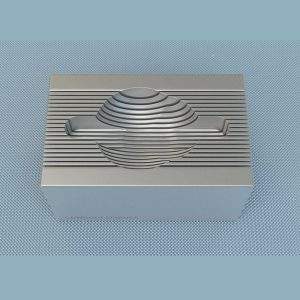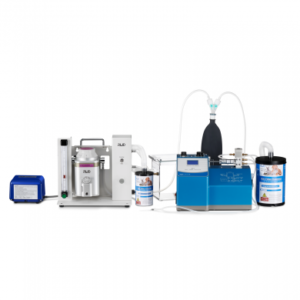
Best Microchannel Pipettes: A Comprehensive Guide
Introduction Pipetting, at first glance, would seem a fairly simple and easy task. Essentially described as glass or plastic tubes used to measure and transfer

As an Amazon Associate Conductscience Inc earns revenue from qualifying purchases
Clamp meters are sophisticated electrical tools used in a variety of residential, commercial, and industrial settings. Note that the jaws of these instruments feature clamps around an electrical conductor, which allows specialists to measure different parameters without making physical contact with the electrical system or disconnecting the circuit.
Clamp meters are designed to measure large alternating currents (AC) by taking readings of the magnetic field around the evaluated conductor; however, Hall Effect and cane type tools can also detect direct current (DC). Note that modern clamp meters can measure both alternating and direct currents and often include various functions: some units are able to measure not only current (A), but voltage (V), resistance (F), phase, temperature, frequency (Hz), capacitance, and continuity. No surprise, these tools are often defined as multimeters with electrical sensors.
We should note that the three main types of clamp meters are current transformer clamp meters, Hall Effect models, and flexible units. While current transformer clamp meters measure only alternating current, Hall Effect meters can detect both alternating and direct currents. Flexible clamp meters, on the other hand, consist of a Rogowski coil and are ideal for measuring alternating current in limited spaces. There are also iron vane clamp meters used to measure true root mean square (RMS) values and both alternating and direct currents, mainly in heavy industries. Note that in AC currents, electricity changes polarity and causes a dynamic changing magnetic field, while in DC currents, electricity flows in a fixed direction and keeps a constant magnetic field. Clamp meters usually have a minimum range of 0-100 A and reach up to 600 A. Yet, some units can measure up to 999 A or 1400 A, even 2500 A.
Clamp meters are widely used by electricians and technicians to test and troubleshoot electrical equipment and circuits. As these tools allow technicians to take readings on live conductors without disconnecting the circuit, clamp meters are highly valued in a variety of settings, such as installation, service, and maintenance of industrial control, residential electrical systems, and commercial HVAC.
Given the wide variety of electrical products on the market, it’s no surprise that choosing a clamp meter can be a challenging task. Users should consider three major factors: requirements, specifications, and total costs.
Requirements: Before purchasing a clamp meter, prospective buyers should decide if they need a unit that measures alternating current, direct current, or both. Note that most units for sale today are capable of measuring both AC and DC currents. The actual working conditions can also impact one’s purchasing choices. Note that if clamp meters are used under or over their specified temperature parameters, measurements might be inaccurate. Last but not least, the design and the size of a unit should be considered. Clamp meters must be durable to resist eventual drops, while their displays/icons should be easy to read.
Specifications: Various parameters should be considered before buying a clamp meter. As stated earlier, modern clamp meters are versatile tools that can measure not only current, but different parameters, such as voltage, resistance, and temperature. Yet, instead of looking at quantity, users should focus on quality. The accuracy or how close measurements are to the actual values is essential. Note that an accuracy rate of +/-1% for a reading of 100 A means that the real values could be 99-101 A, while an accuracy rate of 2%+/-2 means that the actual values could be 97.8-102.2 A. Note that clamp meters should meet the industry accuracy standard of 2%+/-5. Some beneficial advanced features are true RMS, Crest values, Ingress Protection (IP) or NEMA ratings, Inrush, and auto-ranging functions. Data logging (including minimum/maximum storage) and connectivity settings are also vital to improve readability and usability.
Total costs: Given the wide variety of products and features on the market, it’s no surprise that costs can vary significantly between products and brands. Note that Fluke is one of the most influential companies that manufacture sophisticated clamp meters. Yet, users should aim for robust and safe units first. When it comes to costs, additional accessories, such as test leads and probes, should be considered.
Choosing a clamp meter can be a daunting task. Therefore, based on different parameters and user reviews, we present some of the best clamp meters for sale to help you make an informed decision.
1. Fluke 323 True-RMS Clamp Meter
Fluke 323 True-RMS Clamp Meter is one of the best clamp meters for sale. This true RMS sensing meter measures AC current to 400 A, AC/DC voltage to 600 V, and resistance to four kilohms. Note that the unit has a measurement accuracy of +/-2% and good resolution settings. The meter also has an audible continuity sensor and a large jaw that can be used on a conductor of up to 30 mm. One of the best features of this model, which is rated for CAT IV installations to 300 V and CAT III installations to 600 V, is the fact that it meets IEC safety standard 61010-1, which guarantees safe and accurate use.
2. Klein Tools CL800 Electrical Tester
Klein Tools CL800 Electrical Tester is a wonderful auto-ranging digital meter that measures AC/DC current, AC/DC voltage, continuity, resistance, frequency, and capacitance. It can also measure temperature and test diodes via test-leads. Additionally, the unit features a low impedance mode for detecting ghost or stray voltages and a low battery indicator. This true RMS sensing meter is designed for operating temperatures from 32°F to 104°F (0°C to 40°C) and to withstand drops of up to two meters, which makes it ideal for busy environments. Note that this model has Class 2 safety rating and is rated for CAT IV installations to 600 V and CAT III installations to 1000 V. With a variety of settings and safety features, this clamp meter is ideal for both professionals and do-it-yourself enthusiasts.
3. Milwaukee 2235-20 Clamp Meter
Milwaukee 2235-20 is a durable, heavy-duty true RMS clamp meter, ideal for a variety of professional, commercial, and industrial settings. It can measure AC current of up to 400 A and AC/DC voltage of 600 V, as well as the resistance of up to 4000 ohms. Note that the unit has a built-in LED and durable armor, which makes it an attractive electrical tool suitable for different working conditions.
4. Meterk MK06 Clamp Meter
Meterk MK06 is an auto-ranging multi-purpose clamp meter with high resolution and a backlit screen. The unit measures AC/DC current, AC/DC voltage, frequency, duty cycle, diodes, capacitance, and resistance. Additionally, it features continuity testing and overload protection. Last but not least, this sophisticated clamp meter has a data hold button and a light/sound alarm to improve usability and user comfort.
5. Etekcity MSR C600 Digital Clamp Meter & Multimeter
Etekcity MSR C600 Digital Clamp Meter & Multimeter is an auto-ranging clamp meter that can perform different measurements, such as AC current, AC/DC voltage, resistance, diode, and continuity testing. Note that this unit is suitable for conductors of up to 26 mm. This meter also has a data hold button, a large display, and a sleep mode for energy conservation, which makes it an attractive and versatile unit. Note that the clamp meter comes with a pouch to facilitate transportation and use.
6. Uni-T UT210E – True RMS AC/DC Current Mini Clamp Meter
Uni-T UT210E True RMS AC DC Current Mini Clamp Meter is an advanced true RMS clamp meter that can measure AC/DC current (of up to 100 A), as well as voltage, resistance, continuity, capacitance, and diode testing. The unit has high accuracy and resolution, with a 1%+/-2 deviation. Furthermore, this model comes with voltage detection connected to an LED to inform users if wires are live, as well as a battery level indicator. The unit has a compact size, which makes it a great tool for both specialists and beginners.
7. Uni-T UT202A Clamp Meter
Uni-T UT202A Clamp Meter is an auto-ranging clamp meter with a compact design. This meter can be used to measure AC current, AC/DC voltage, resistance, and continuity. The unit’s data hold functions make it a convenient unit, especially for home use. Additionally, it features a low battery indicator and a full icon display. Note that this clamp meter works for 200 mV-600 V DC voltage and 2 V-600 V AC, which are the ranges for CAT II installations.
8. Mastech MS2115A Clamp Meter
Mastech MS2115A is a powerful clamp meter that measures AC and DC current of up to 1000 A. It also provides measurements of Inrush current, voltage, resistance, frequency, duty cycle, capacitance, continuity, and diode testing. Note that the unit runs on a 9-volt battery. Furthermore, this meter has hardwearing armor and durable controls, including rubberized probes, which makes it a popular tool among specialists.
9. Amprobe AMP-210 Clamp Meter
Amprobe AMP-210 is a great unit with a wide range of measuring functions. The unit provides true RMS sensing and error-free measurements of AC current (up to 600 A), AC/DC voltage, frequency, resistance, and capacitance. Besides, it can detect low currents and take readings for diagnosing motor capacitors. Note that it is safety rated for CAT III installations to 600 V. With its bright backlit screen and versatile features, this unit is valued by many electricians and technicians.
10. General Technologies Corp GTC CM100
General Technologies Corp GTC CM100 is an advanced clamp meter that provides AC and DC current measurements from 0.001 to 100 A, as well as AC/DC voltage of up to 600 V. The unit has small jaws (1.2 inches (W) x 0.53 inches (D) or 300 mm (W) x 13.4 mm (D)) that open up to ½ inch or 12.5 mm, which makes it ideal for parasitic draws. With its advanced features, this clamp meter is one of the best units on the market.
Working with clamp meters on electrical systems requires safety standards. Clamp meters should meet different standards, such as the International Electrotechnical Commission (IEC) safety standards. For example, if a voltage measurement is needed in an electrical panel with 480 V, then a clamp meter rated Category III – 600 V is required in order to provide accurate and safe use. Additionally, meters with a UL, CSA, VDE, or TUV certification are recommended as they meet not only IEC standards but have been tested by different independent bodies.
Clamp meters are sophisticated electrical tools designed to measure large AC currents by taking readings of the magnetic field around any conductor. Modern clamp meters can measure both AC and DC current, as well as voltage, resistance, phase, temperature, frequency, capacitance, and continuity. Note that clamp meters have a minimum range of 0-100 A and can reach up to 600 A. That being said, some units can measure up to 999 A and 1400 A, even 2500 A. Before purchasing a unit, users should consider three major factors: requirements, specifications, and total costs. While some advanced features, such as true RMS, Crest values, Ingress Protection (IP) or NEMA ratings, Inrush, auto-ranging functions, and data logging, can be beneficial, accuracy and safety are the two leading aspects to look for. Note that clamp meters should meet different safety standards to guarantee secure use.
To sum up, clamp meters are popular electrical tools widely used by electricians and technicians. As these tools allow professionals to take readings on live conductors without disconnecting the electrical system, clamp meters are highly valued in a variety of settings, such as installation, service, and maintenance of residential electrical systems, commercial HVAC products, and industrial settings.

Introduction Pipetting, at first glance, would seem a fairly simple and easy task. Essentially described as glass or plastic tubes used to measure and transfer

Resource Identification Initiative: A Key to Scientific Success and Analytics The key to success can be found in the essential principles of the Resource Identification

INTRODUCTION AND BRIEF HISTORY One of the most important pieces of equipment in the laboratory is the centrifuge, which facilitates the separation of samples of

INTRODUCTION AND BRIEF HISTORY One of the most important pieces of equipment in the laboratory is the centrifuge, which facilitates the separation of samples of






DISCLAIMER: ConductScience and affiliate products are NOT designed for human consumption, testing, or clinical utilization. They are designed for pre-clinical utilization only. Customers purchasing apparatus for the purposes of scientific research or veterinary care affirm adherence to applicable regulatory bodies for the country in which their research or care is conducted.